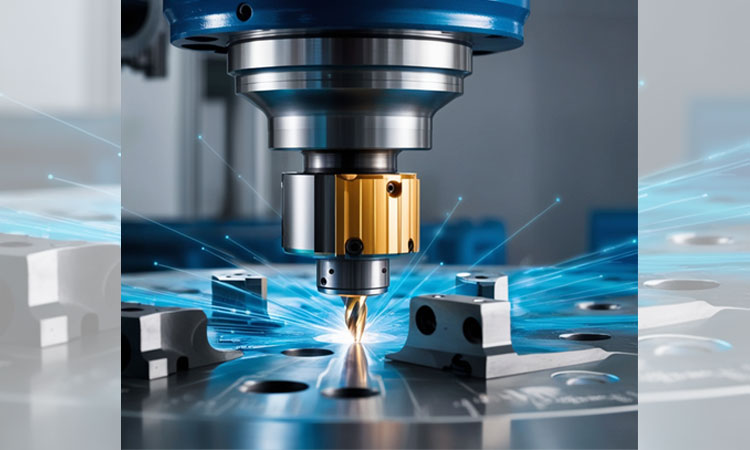The cutting tools industry, a critical enabler of modern manufacturing, is undergoing a digital revolution. With the integration of smart technologies such as the Internet of Things (IoT) and Artificial Intelligence (AI), the industry is achieving unprecedented levels of precision, efficiency, and sustainability. Globally, the adoption of IoT and AI in cutting tool optimization is projected to grow at a CAGR of 9.8%, with the market value exceeding USD 1.2 billion by 2028.
IoT: Enabling Real-Time Monitoring and Decision-Making
IoT has emerged as a game-changer in cutting tool management. By embedding sensors in cutting tools and machining systems, manufacturers can monitor critical parameters such as temperature, vibration, cutting forces, and tool wear in real time. These sensors feed data to cloud-based platforms, providing actionable insights that enhance operational efficiency.
In India, nearly 35% of manufacturing units have adopted IoT-enabled solutions, with the automotive and aerospace sectors leading the charge. Globally, IoT adoption has resulted in a 20% reduction in unplanned downtime and a 15% improvement in overall equipment effectiveness (OEE) in machining operations.
For example, Tata Motors’ adoption of IoT-based predictive maintenance systems for cutting tools has reduced tool failure rates by 30%, saving millions annually in operational costs.
AI: Optimizing Tool Life and Enhancing Productivity
AI-powered systems are transforming cutting tool optimization by analyzing vast amounts of operational data to predict tool life, identify wear patterns, and suggest process improvements. Machine learning algorithms can determine the ideal cutting parameters for different materials, reducing trial-and-error in tool selection.
Globally, manufacturers using AI have reported up to a 40% increase in tool life and a 25% boost in productivity. In India, government initiatives like “Make in India” and “Digital India” are encouraging the adoption of AI in manufacturing, with the cutting tools market benefiting from these advancements.
A case in point is Bharat Forge, which employs AI-driven analytics to optimize tool utilization across its machining centers. This has led to a 20% increase in throughput while minimizing material wastage.
Bridging the Gap Between Machines and Humans
The integration of IoT and AI is fostering a collaborative environment where machines, tools, and operators work seamlessly. Smart dashboards provide operators with real-time alerts on tool health, enabling timely interventions that prevent tool failures and maintain machining accuracy.
Moreover, the combination of IoT and AI facilitates adaptive machining, where cutting parameters are dynamically adjusted based on real-time conditions. This not only enhances machining precision but also significantly reduces energy consumption, aligning with global sustainability goals.
The Road Ahead
India, as the world’s second-largest producer of machine tools, is poised to lead the adoption of smart manufacturing technologies in the cutting tools sector. The global market for AI and IoT in machining is projected to reach USD 2 billion by 2030, with Asia-Pacific accounting for 40% of the market share.
The integration of IoT and AI in cutting tool optimization is revolutionizing machining operations. By enabling real-time monitoring, predictive maintenance, and adaptive machining, these technologies are driving productivity and sustainability across industries. As smart manufacturing continues to evolve, cutting tools will remain at the heart of this transformation, empowering manufacturers to achieve new heights of innovation and efficiency.


